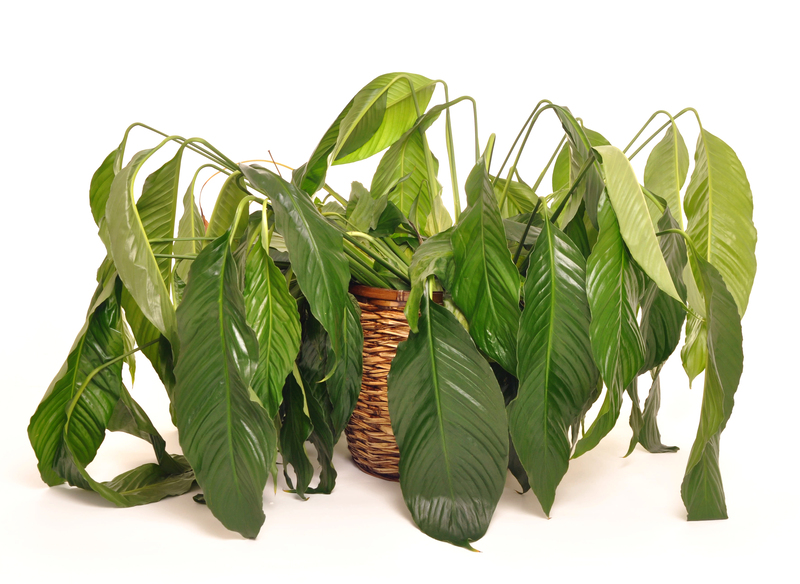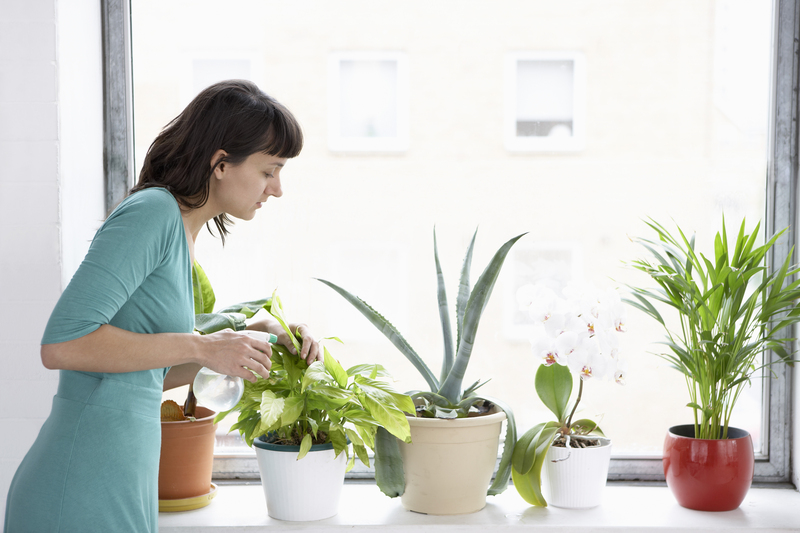Growing a herb garden: the perfect balance of beauty and utility
Posted on 01/07/2025
Growing a Herb Garden: The Perfect Balance of Beauty and Utility
Growing a herb garden offers a rewarding and enriching experience for gardeners of all skill levels. Whether you are cultivating a small indoor planter or a lush outdoor patch, a herb garden provides both aesthetic appeal and practical benefits. This comprehensive guide delves into the essentials of establishing, maintaining, and enjoying a thriving, productive herb garden that truly embodies the perfect balance of beauty and utility.
Why Choose to Grow Herbs?
From culinary uses to medicinal properties, and from aromatic delight to visual splendor, herbs have an illustrious history in home gardens. Before you start your own patch, let's examine why growing kitchen herbs at home is becoming increasingly popular.
- Fresh Flavor at Your Fingertips: There's nothing like picking basil or mint just seconds before cooking.
- Cost Savings: Store-bought herbs can be expensive and often spoil quickly, but growing your own ensures a steady supply.
- Natural Health Benefits: Many herbs offer therapeutic effects, ranging from digestive aid (like fennel) to relaxation (such as lavender).
- Eco-Friendly: Homegrown herbs reduce your carbon footprint and the amount of plastic packaging generated by store-bought produce.
- Visual Appeal: Herb gardens are known for their varying shades of green, delicate blossoms, and soothing fragrances--beautifying their surroundings.

Planning Your Perfect Herb Garden
Before you start digging, thoughtful planning is key. Herb gardening can be tailored to any space, from windowsill pots to expansive backyard borders. Consider the following when designing your functional and beautiful herb garden:
Choosing the Right Location
Sunlight is essential. Most herbs thrive with at least 6 hours of direct sunlight per day. If you're working indoors, a south-facing window or the use of grow lights are excellent alternatives.
- Outdoor: Select well-draining soil and a spot protected from strong winds.
- Indoor: Use high-quality potting mixes and ensure proper drainage. Regularly rotate your containers to promote even growth.
Deciding Between Containers or Ground Beds
Container herb gardens are ideal for urban gardeners or those with limited space. They allow flexibility and help control soil quality. On the other hand, a dedicated herb bed can integrate seamlessly with landscaping and accommodate larger plants like sage or rosemary.
Selecting Herbs for Your Garden
One of the joys of growing a culinary herb garden is choosing from a vast array of plants, each offering unique flavors, aromas, and visual interest. Here's a breakdown of popular options to consider:
- Basil: Essential for Italian and Thai dishes. Fast-growing and best in warm weather.
- Mint: Exceptionally versatile, from teas to cocktails. Consider planting in pots to prevent overgrowth.
- Rosemary: Woody, fragrant, and drought-tolerant. Adds structure and year-round greenery.
- Parsley: Both curly and flat-leaf varieties offer flavor and decorative value.
- Thyme: Compact creeper boasting a savory taste, perfect for borders.
- Chives: Delicate onion flavor and attractive purple flowers.
- Dill, cilantro, sage, oregano, and lavender are also excellent choices for a diverse and multi-purpose herb garden.
Pro Tip: Mix Annuals and Perennials
To maximize both utility and beauty, plant a combination of annual herbs (like basil and cilantro) alongside sturdy perennials (such as oregano, mint, and rosemary). This ensures fresh harvests and year-round structure in your herb borders or containers.
Steps to Create a Thriving Herb Garden
- Prepare the Soil: Herbs prefer loose, well-drained soil with moderate fertility. Amend heavy soils with compost or aged manure.
- Plan Your Layout: Group herbs by water and sunlight needs. Taller herbs should go at the back or center, shorter ones along the edges.
- Sow or Transplant: Direct sow seeds or use seedlings from a nursery for a faster head start. Water newly planted herbs thoroughly.
- Mulch & Label: Apply a light mulch to retain moisture and suppress weeds. Use attractive labels or markers for easy identification and visual charm.
- Water & Feed: Most edible herbs prefer slightly damp but never soggy soil. Water deeply when the top inch feels dry and avoid excessive fertilizer.
- Capture the Beauty: Consider adding decorative edging, stone paths, or whimsical garden ornaments to accentuate the visual appeal of your herb garden.
Design Ideas: Combining Beauty and Functionality
An herb garden can be as ornamental as it is practical. Here are some ideas to inspire your own aesthetic and productive herb beds:
Knot and Formal Herb Gardens
Inspired by traditional European gardens, knot gardens employ geometric patterns and clipped low-growing herbs such as thyme and lavender. Interweaving textures and colors creates a stunning, orderly look.
Vertical and Wall Herb Planters
Short on space? Vertical gardens or wall-mounted pots allow you to grow a variety of herbs in even the smallest areas, making a living green tapestry.
Herb Spiral Garden
Build a raised spiral mound from stones, then plant different herbs along the spiral, taking advantage of microclimates (wetter bottom, drier top) to accommodate various growing requirements.
Mixed Borders and Companion Planting
Interplant herbs among your existing vegetable or flower beds. This not only brings scent and color, but also offers natural pest control and encourages beneficial insects.
Caring for Your Herb Garden: Tips for Success
Consistent care rewards you with a lush, productive garden. Keep these herb maintenance tips in mind:
- Pruning: Regularly trim herbs to encourage bushy growth and avoid flowering (which can reduce leaf flavor).
- Disease Prevention: Ensure good air circulation, don't overcrowd plants, and avoid wetting foliage when watering.
- Pest Control: Use natural repellents like neem oil, or introduce ladybugs for aphid control. Some herbs, such as chives and basil, naturally deter pests.
- Seasonal Adjustments: Move containers indoors as temperatures drop, or use cloches for winter protection.
Harvesting and Utilizing Your Homegrown Herbs
The more you harvest, the more most herbs grow. For best flavor, pick leaves in the morning after dew lifts but before the sun is high. Here's how to make the most of your herb harvests:
- Fresh Use: Add basil to pasta, mint to teas, chives to salads, and so on right from garden to table.
- Preserving: Dry or freeze herbs for off-season use. Herbs like rosemary and thyme retain great flavor when dried.
- Infusions & DIY Projects: Make oils, vinegars, bath salts, and potpourris using your bounty of homegrown herbs.

From Garden to Home: The Lasting Impact of a Herb Garden
In addition to enhancing home-cooked meals, a vibrant herb garden supports pollinators, teaches children about nature, and brings tranquility to your outdoor or indoor living areas. Herbs can transform bland spaces into lush edible oases, providing endless inspiration.
Summary: Sowing More than Seeds
Growing a herb garden is truly about striking the perfect balance between beauty and utility. As you nurture your plot, you'll not only reap a harvest of fresh flavors and natural remedies, but also enjoy a green sanctuary brimming with life and color. Whether your interest lies in cooking, crafting, or landscape design, the journey of cultivating herbs is sure to enrich your daily life.
Frequently Asked Questions About Herb Gardens
- What herbs grow well together? Mediterranean herbs like rosemary, thyme, and oregano thrive together in well-drained soil. Mint and basil need more moisture and are best grouped separately or grown in containers.
- How often should I water my herb garden? Most herbs prefer soil that dries out slightly between waterings. Water deeply, but less frequently, and always check the topsoil before watering.
- Can I grow herbs indoors all year round? Absolutely! With enough light (especially grow lights during winter) and proper potting mix, many herbs flourish indoors year-round.
- How do I keep my herbs from getting leggy? Regularly pinch back growth and ensure your plants get enough light. Rotate indoor plants for even sun exposure.
- When is the best time to harvest herbs? The best time is just as buds appear but before full flowering. Leaves are most flavorful at this stage.
Start Your Own Beautiful and Useful Herb Garden Today!
No matter your space or experience level, growing herbs offers immense rewards. With careful planning, informed choices, and a little daily attention, your herb patch will flourish--delivering both stunning beauty and unmatched utility to your home. Get inspired, pick your favorite varieties, and transform your space into a lush, fragrant retreat!
```
